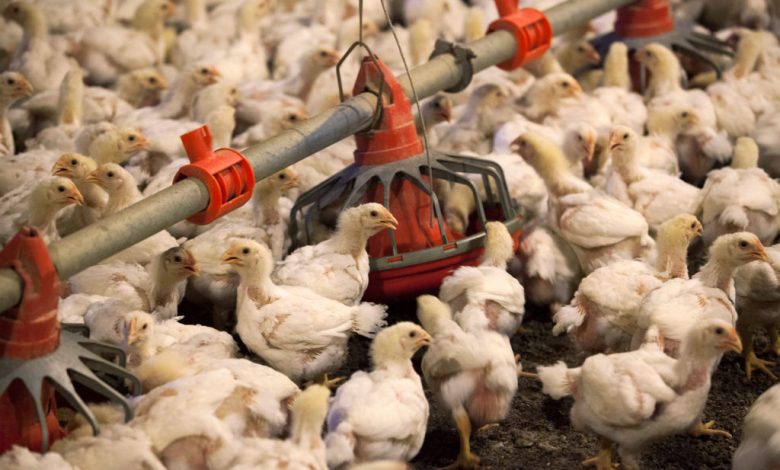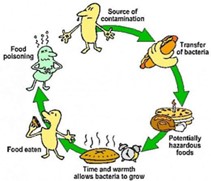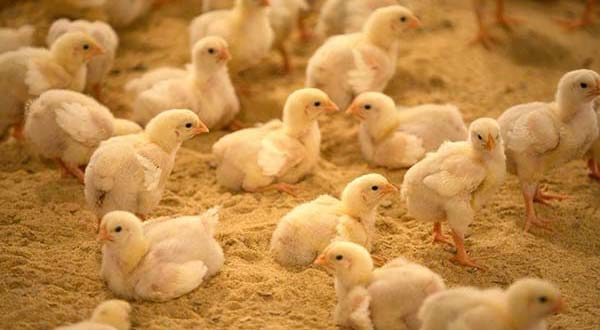Foodborne intoxication

Foodborne intoxication
Dr. Shikha Tamta
Ph.D. Scholar, Department of veterinary public health and Epidemiology, IVRI, Izatnagar, Bareilly, UP
Dr. Rohit
B.V. Sc, IIVER, Rohtak, Haryana
Foodborne infections and intoxications associated with foods of animal origin are a significant public health concern globally. These illnesses result from consuming contaminated meat, poultry, dairy products, eggs, and seafood. In this comprehensive exploration, we’ll delve into the details of these foodborne issues, including their causes, common pathogens, symptoms, prevention measures, and their impact on public health.
Foods of animal origin, such as meat, poultry, dairy, eggs, and seafood, are common sources of these infections due to their potential for microbial contamination. Foodborne illnesses can range from mild gastrointestinal discomfort to severe, life-threatening conditions.
Common Pathogens Associated with Foods of Animal Origin
Several pathogens are commonly associated with foods of animal origin. These microorganisms can contaminate these foods during various stages of production, processing, and distribution. Here are some of the primary pathogens:
Staphylococcus aureus
Clostridium botulinum
Seafood Toxins
Listeria monocytogenes
Escherichia coli (E. coli)
Campylobacter
Salmonella
Symptoms and Duration
The symptoms of foodborne infections and intoxications associated with foods of animal origin can vary widely depending on the specific pathogen and the individual’s health status. However, common symptoms include:
Nausea
Vomiting
Diarrhea
Fever
Abdominal cramps
Muscle aches
Neurological symptoms (in severe cases)
Prevention and Control
Preventing foodborne infections and intoxications associated with foods of animal origin is crucial for public health. Several preventive measures can help reduce the risk:
- Cooking Temperatures: Cook meat, poultry, and eggs to recommended internal temperatures to kill pathogens. Use a food thermometer to ensure proper cooking.
- Avoid Cross-Contamination: Prevent cross-contamination by keeping raw meat, poultry, and seafood separate from ready-to-eat foods. Clean and sanitize kitchen surfaces and utensils regularly.
- Safe Handling: Practice good hygiene while handling food. Wash hands thoroughly with soap and water, especially after handling raw animal products.
- Avoid Raw or Undercooked Products: Avoid consuming raw or undercooked eggs, meat, poultry, and seafood, as they are more likely to harbour harmful pathogens.
- Pasteurization: Consume only pasteurized dairy products, as pasteurization kills harmful bacteria.
- Safe Seafood: Purchase seafood from reputable sources, and be cautious about consuming raw or undercooked seafood, especially shellfish.
- Proper Food Storage: Refrigerate perishable foods promptly and ensure that your refrigerator is set to the appropriate temperature (below 40°F or 4°C).
- Food Safety Education: Educate yourself and others about food safety practices to reduce the risk of foodborne illnesses.
- Regulatory Oversight: Regulatory agencies, such as the U.S. Food and Drug administration (FDA) and the U.S. Department of Agriculture (USDA), enforce food safety standards and monitor food production, processing, and distribution to ensure safety.
Conclusion
Foodborne infections and intoxications associated with foods of animal origin remain a significant public health challenge. The year 2000 marked a point in history when ongoing research and public health efforts aimed to better understand and combat these issues. By understanding the common pathogens, their sources, symptoms, and prevention measures, individuals and public health agencies can work together to reduce the incidence of these illnesses and ensure the safety of the food supply. Proper food handling, cooking, and storage practices, along with regulatory oversight, are essential components of mitigating the risks associated with these foodborne pathogens. Protecting public health requires ongoing vigilance, education, and cooperation across the food industry, government agencies, and the general population.



